How To Soundproof a Hollow Door? {9 Proven Ways}
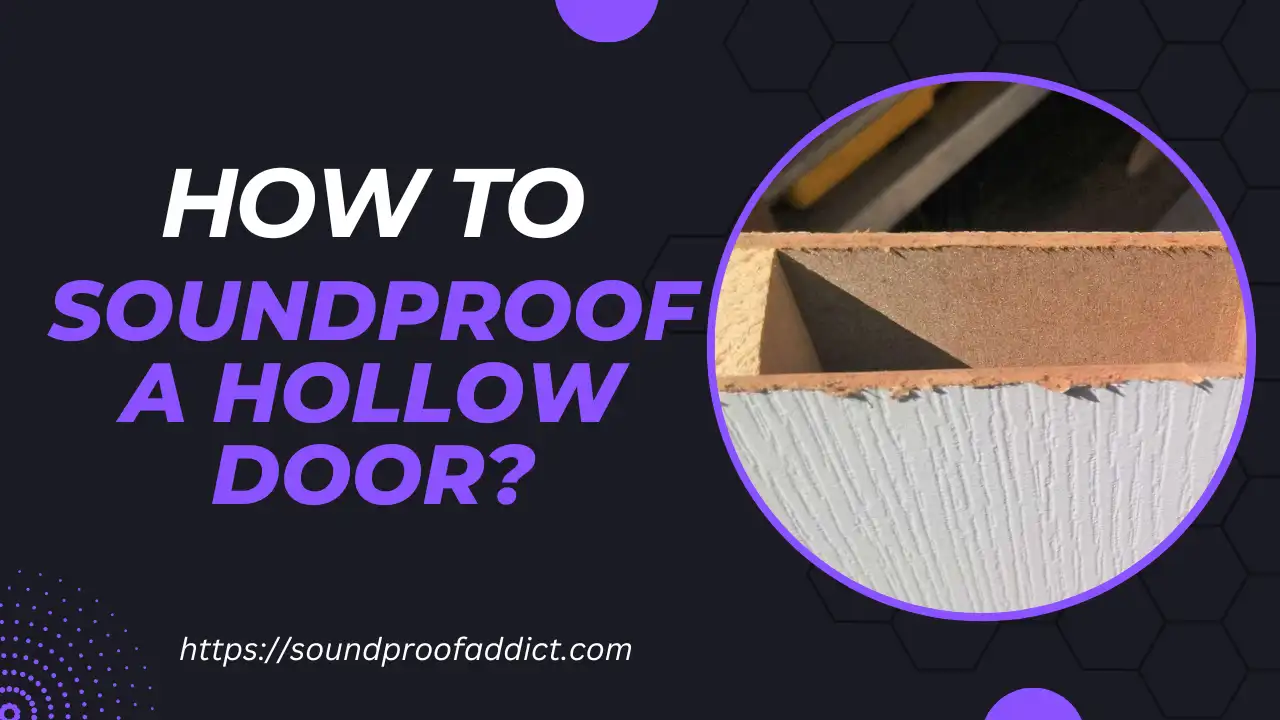
Believe it or not, but hollow doors allow a lot of sound to pass through since they are pretty lightweight.
And if you have hollow doors in your home then there is a higher chance that you may have experienced loud noise coming from outside through your door.
So, if you have hollow core doors in your home and you are looking for ways to soundproof it, then you’ve come to the right place.
In this guide, I am about to give you 9 proven methods I’ve used to soundproof hollow core doors in my house. These methods really work well.
So if you want to make your hollow door soundproof, just keep reading!
9 Proven Ways to soundproof a hollow core door
Seal tiny gaps and cracks using acoustic caulk
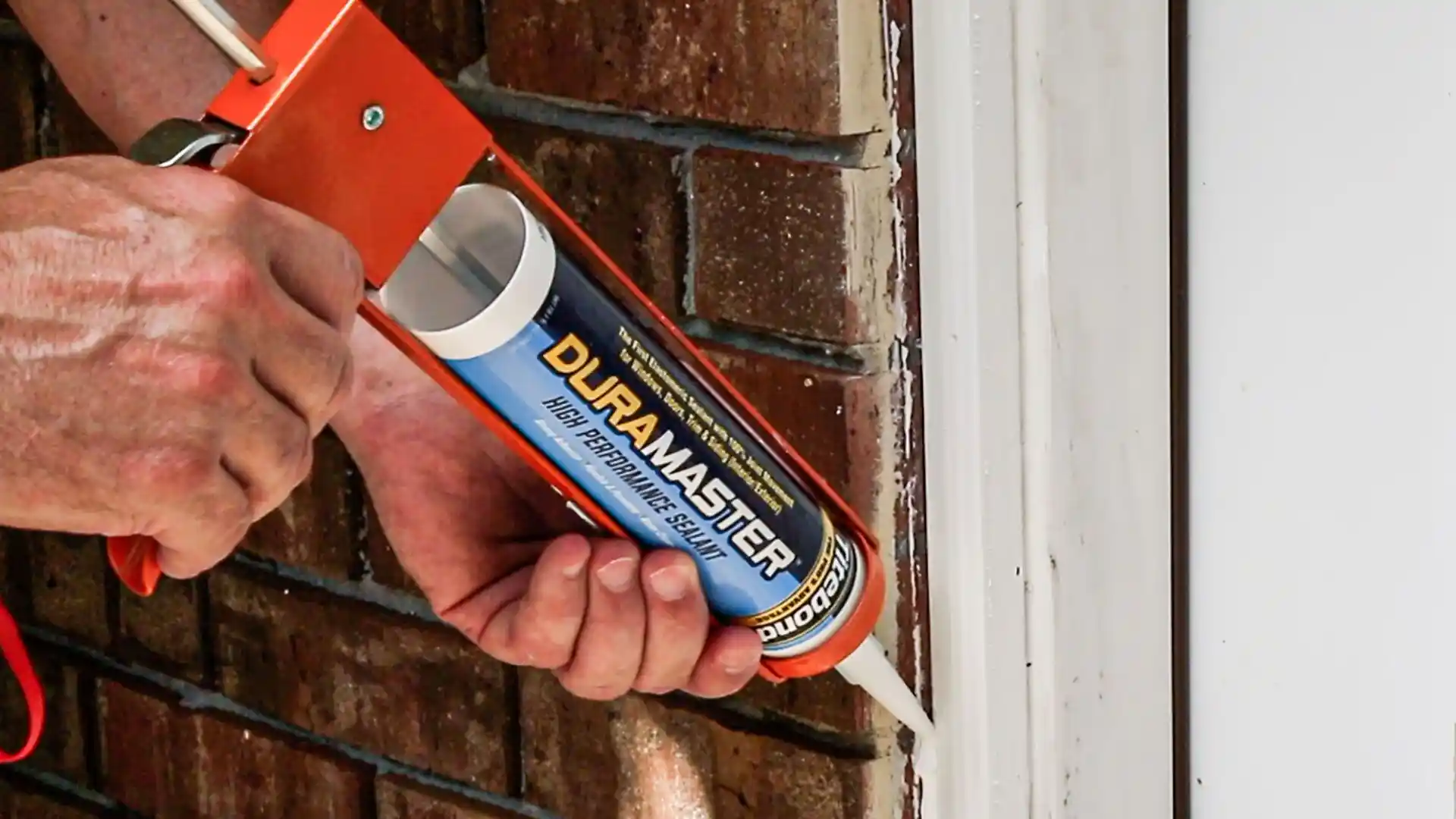
When it comes to soundproof a hollow door, sealing every little gap and cracks matters. Sound behaves a lot like air and can find its way through even the tiniest openings, you all know it.
And according to soundproofcow.com, you can reduce the noise by the up to 15 percent just by caulking around your door.
Now, you might be thinking: Where Can I Find Gaps or Cracks in My Hollow Door?
Well, you can find gaps and cracks along the edges of your hollow door, where the door meets the frame. A great way to find gaps is to check for any light seeping through when the door is closed.
If you see light seeping in, then there’s probably a gap or crack that needs to be sealed. Also, pay attention to the area around the handle and knob, as these are common spots for small gaps.
To these gaps, you can apply 👉 acoustic caulk 👈. This is the most suitable option for sealing these types of gaps. Applying it is super easy. Just clean the surfaces around the edges of your door where you plan to apply the caulk.
Then Load the caulk tube into the caulk gun and cut the tip of the caulk tube at a 45-degree angle to create a small opening.
Now, hold the caulk gun at a slight angle, with the tip of the tube pointing to the gap or crack you want to seal and squeeze the trigger slowly and steadily to apply a continuous bead of caulk. And that’s it!
Related: How to make a French door more soundproof?
Weatherstripping
Before we get into the details, I have a question for you- Have you ever noticed how a gust of wind slip through the gap around the perimeter of your door?
Well, if the answer is yes, then your door probably needs 👉 weatherstripping 👈. It is basically a material used to seal gaps around doors to prevent air and noise from seeping through.
Apply adhesive weatherstripping around the edges of the door frame. This will create a tighter seal when the door is closed, reducing gaps where sound can escape.
Seal the bottom of the door
Believe it or not, sealing the bottom of the door is just as important as caulking and weatherstripping. The idea behind is the same as before- to seal the gaps.
But to seal the bottom of the door you need to install a door sweep. A door sweep forms a snug seal against the floor when the door is closed, blocking the gap at the bottom.
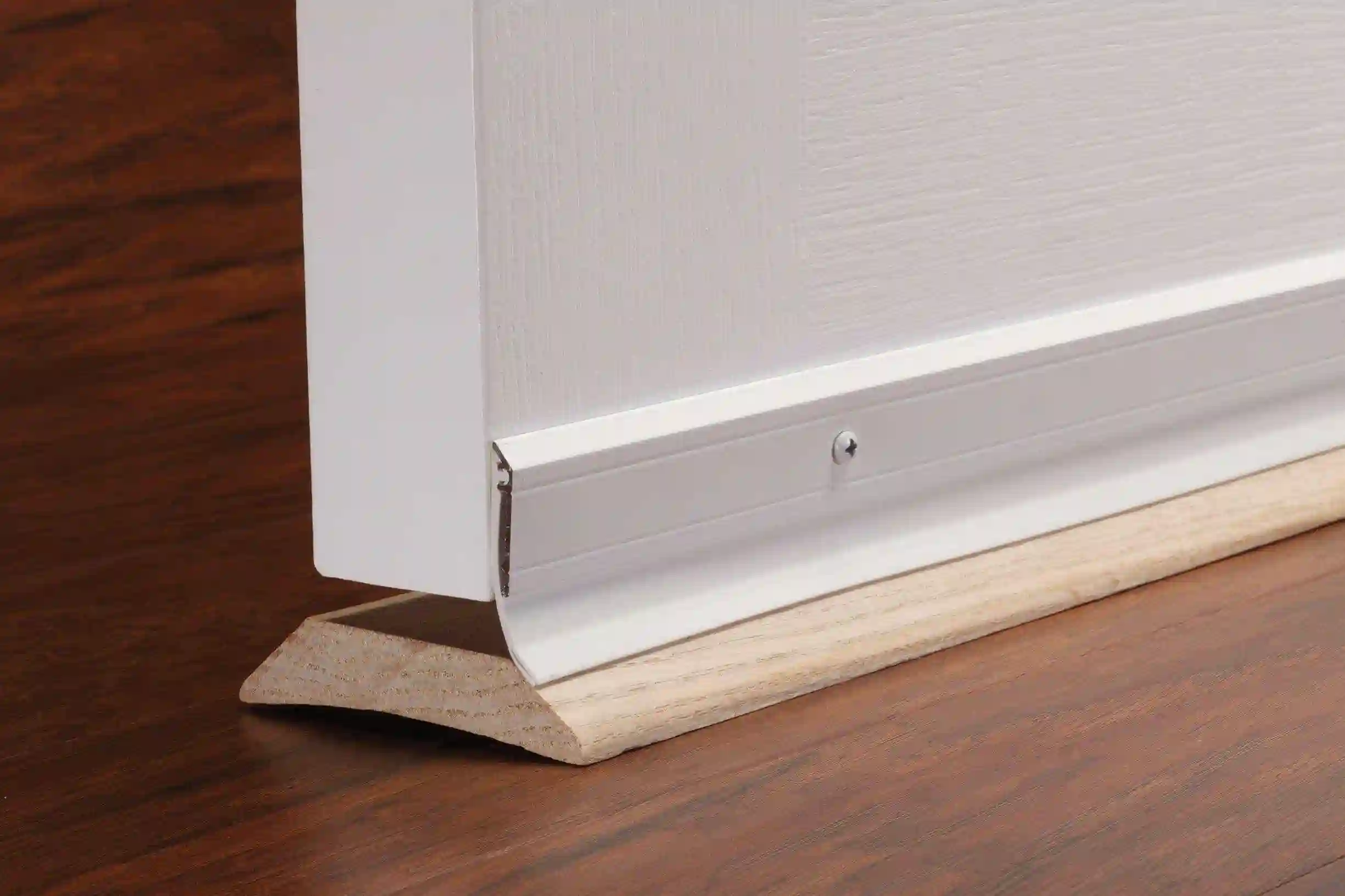
You choose between adhesive and non-adhesive. 👉 Non-adhesive door sweep 👈 needs to be screwed in. You can choose which one you prefer.
And installing a door sweep is actually pretty simple and doesn’t require you to be an expert in DIY stuff.
A good quality door sweep may cost you between $10 to $30, so they aren’t expensive at all.
Use wood diffusion panels to soundproof a hollow door
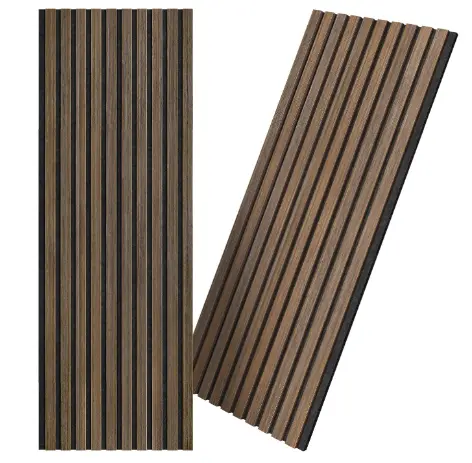
If you don’t have much money to spend but still want to effectively soundproof your hollow core door, you should try using something called Wood Diffusion Panels. It is one of the go-to solution for making a hollow core soundproof and for multi-fold doors soundproofing.
You might not know what it actually is, basically, these panels are made from a combination of materials: MDF (a type of wood), Polyester Felt, and a veneer (a thin layer of wood).
This wooden diffusion panel helps spread sound out and also absorb sound, reducing the amount of noise that passes through your hollow core door.
However, these panels are usually made to be set up on walls, but you can use them to soundproof a hollow door by attaching them directly to the door itself.
By the way, I do let you know that these panels are slightly heavy, a 47.2×15.7 inch panel weighs 17.6 LB. You can screw these panels right onto your door, but before you do that, check if your door’s hinges can handle the weight of the panels. If not, you might need to add some extra hinges to support them.
As for the cost, these wooden diffusion panels are not expensive. Two of these measure 47.2×15.7 inches each and currently cost around $117, so they are reasonably priced.
This approach is my top suggestion if you’re aiming to truly soundproof a hollow door.
Hang soundproofing blankets
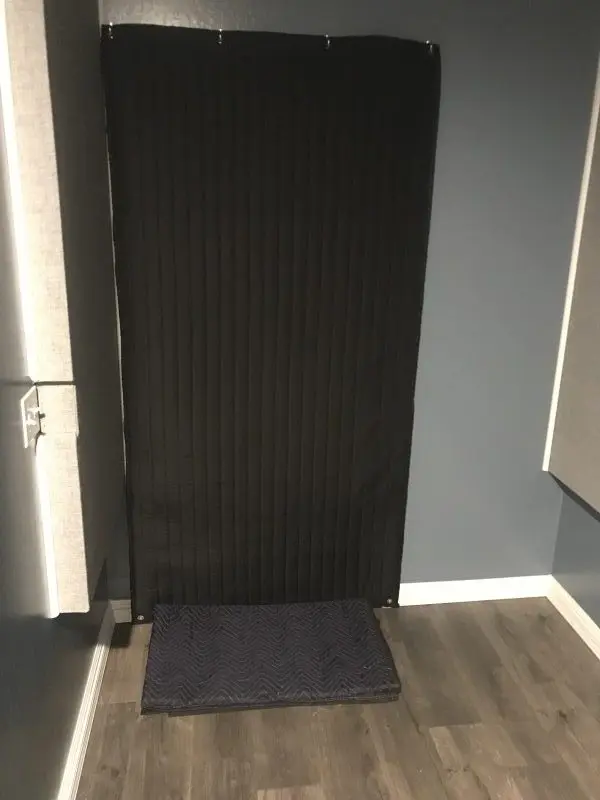
If you want a temporary way to make your hollow core door soundproof, using soundproofing blankets is a great idea. Whether you are soundproofing a pocket door or reducing noise through a louvered door soundproofing blankets can help.
According to acousticalsolutions.com, installing soundproofing blankets can lower the noise level from 60 dB(A) to 45 dB(A). (read the full article)
When sound waves hit a soundproofing blanket, the dense fibers and layers absorb and dampen the energy of the waves. They can significantly reduce noise, especially echoes and high-frequency sounds.
The cost of these blankets can vary based on how big they are, how thick they are, and how good their quality is. Generally, they cost between $50 to $200. This is the soundproof blanket I would recommend: 👉 BoxerTools XL Pro Studio Sound Dampening Blanket
And some DIY enthusiasts might even find tutorials to make their own blankets, which can be even more affordable and you can make these blankets even better at reducing noise by adding more soundproofing materials to them.
Installing these blankets is as easy as hanging a picture frame. They often come with grommets or tabs, which makes them simple to hang from hooks, nails, or even curtain rods. Beyond this, this can also be used for soundproofing a sliding glass door.
Fill the door using spray foam
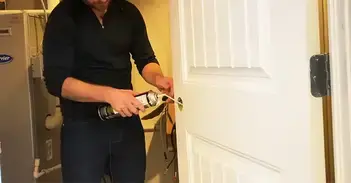
Hollow doors are the same as they sound like, I mean hollow and of course lightweight, and this is probably the main reason why they are so poor at blocking out sound. So by filling the inside of the hollow door you can increase its noise reduction capacities.
And this is one of the best and most effective ways to noise-proof a hollow core door. To fill the door, I would recommend insulation foam.
Insulation foam, often in the form of spray foam, is an expanding foam that fills nooks and crannies with ease. It starts as a liquid and quickly expands into a solid foam.
When you spray the foam into the hollow core of the door, it expands and fills the empty space. This added density helps to dampen sound vibrations, making it harder for noise to travel through the door.
Spray foam insulation adds mass to the door, which is a key factor in blocking sound. Applying spray foam insulation requires a steady hand and a bit of patience.
To fill the hollow core door with foam, first, you’ll need to locate the access points in the door (these are usually small holes). If there aren’t any, you can carefully create small holes along the edges of the door.
Then, insert the spray foam nozzle into these holes and gently inject the foam. Just remember to not overfill, as the foam expands. (Related: How to make an interior door good at soundproofing?)
Attach acoustic foam panels
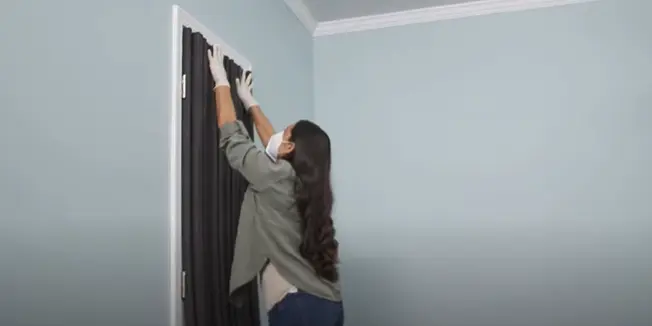
Attaching acoustic foam panels to the door is a super affordable way to improve its noise reduction to a certain level.
Acoustic foam panels are sound absorbing materials and they are pretty good at it. The open-cell structure of the foam is key here – it captures sound energy and transforms it into tiny vibrations. These vibrations then get converted into heat energy, minimizing echoes, reverberations, and all that unwanted noise.
To install these panels on your door all you need to do is just stick them directly to your hollow core door since most acoustic foam panels for doors come with adhesive backings, which makes the job a lot easier.
While acoustic panels are effective, they are not a standalone solution for sound insulating a door, especially a hollow core door. They’re not designed to block out sound directly. So if you want to get better results, consider using it by combining it with soundproofing curtains or blankets.
Related: How to make barn doors soundproof?
Attach mass-loaded vinyl with plywood
Hollow core doors often require some out-of-the-box technique to make them soundproof. To soundproof your door effectively one approach you take is to increase the mass and increase the noise reduction capacities of the door.
This principle behind here is the Mass Law principle, which simply means, that the more mass an object has, the better it is at blocking sound. So, the goal here is to increase the mass of the door.
But that does not mean you can use anything to do so. You need to be strategic about it and try to use materials that are intended to reduce the sound even further, in other words, soundproofing materials.
In my opinion, the best way to increase the mass of the door is to attach a layer of mass-loaded vinyl with plywood, it works super well. The combination of MLV and plywood creates a powerful barrier against sound.
Here is the walk through the process of attaching the combination of mass-loaded vinyl (MLV) and plywood to the door.
Materials You’ll Need:
- Mass-loaded vinyl (MLV)
- Plywood
- Screws
- Screwdriver or Drill
- Measuring Tape
Step 1: Measure and Cut
Measure the dimensions of your hollow core door and cut the plywood and the mass-loaded vinyl to match those measurements.
Step 2: Place the Plywood
Lay the MLV on a flat surface and place the plywood on top of it. Make sure the edges of the plywood align with the edges of the MLV and use staples to attach them securely.
Step 3: Attach the Combination to the door to soundproof it
Using screws, attach the plywood-covered MLV to the hollow core door. Make sure the mass-loaded vinyl is in the middle, I mean the plywood surface should be visible.
And begin by screwing at the corners and then screwing along the edges, placing screws approximately 6 to 8 inches apart.
Step 4: Tighten and Secure
Once all the screws are in place, give them a gentle tightening to ensure a snug fit. Don’t go crazy here, avoid over tightening.
And that’s it! You’ve successfully made your hollow core door much more soundproof by adding a layer of mass-loaded vinyl and plywood
Replace the door with a solid core door
If you have a budget for bigger changes to make your door soundproof then the best option for you will be to replace the hollow core door with a solid core door.
A solid core door, as the name suggests, boasts a solid and dense interior, often made from materials like wood or composite. Unlike hollow core doors that can amplify noise, a solid core door is naturally more effective at blocking sound.
Replacing your current door with a solid core door may cost you between $250 to up to $1500 depending on the type and size of door you are going for.
And installation cost also needs to be considered. Sure you can tackle the installation yourself if you are a DIY enthusiast and you are confident in your ability. But if you are not, hand the installation to an experienced person.
Related: soundproofing door price
How to soundproof a hollow metal door?
To soundproof a hollow metal door, hang soundproofing curtains over the door. Choose curtains with at least 3 layers. These curtains absorb and reduce noise effectively. You can expect a noise reduction of up to 29 dB by using a top-notch soundproofing curtain.
Another effective way to make a hollow metal door soundproof is to add insulation in it. To do so, remove the door from its hinges and add insulation material to the hollow core.
This could be dense foam or acoustic insulation. Just make sure the insulation doesn’t put too much pressure on the door, affecting its functionality.
If you are not satisfied with the noise reduction that these above methods provide, then consider replacing the hollow metal door with a solid core door. Solid doors inherently provide better soundproofing due to their density.
Frequently Asked Questions
Q1. Can you spray foam inside a hollow door?
Yes, you can use spray foam to fill the empty space inside a hollow door.
Q2. What is the best filler for hollow doors?
In my opinion, the best filler for hollow doors are acoustic batting, foam insulation, or expanding spray foam.
Q3. How do you fill small holes in a hollow door?
To fill small holes in a hollow door, use wood filler or putty to fill the gaps. Apply the filler, let it dry, and then sand it down until smooth.
Final Thought
Soundproofing a hollow core door may sound complicated initially but it is easier than soundproofing a roll up garage door.
As you’ve discovered through this comprehensive guide, there’s a ton of proven techniques to reduce the noise coming through your hollow core door. You can choose that fits your budget and soundproofing needs.
In my perspective, the best way to soundproof a hollow core door is to use a layer of mass-loaded vinyl and plywood. It is both effective and affordable.
Also, you can use wood diffusion panels on your door. If you want the best result then replacing the door is a perfect option for you. For soundproofing hollow metal doors, a soundproofing curtain is your best friend.
So that’s it for the post, we hope you found this guide useful, informative and helpful in soundproofing your hollow core door.
Now if you are looking to soundproof your toilet door then read this post. And if you are living in a condo and want to soundproof its door then read this post. https://soundproofaddict.com/how-to-soundproof-a-condo-door/

